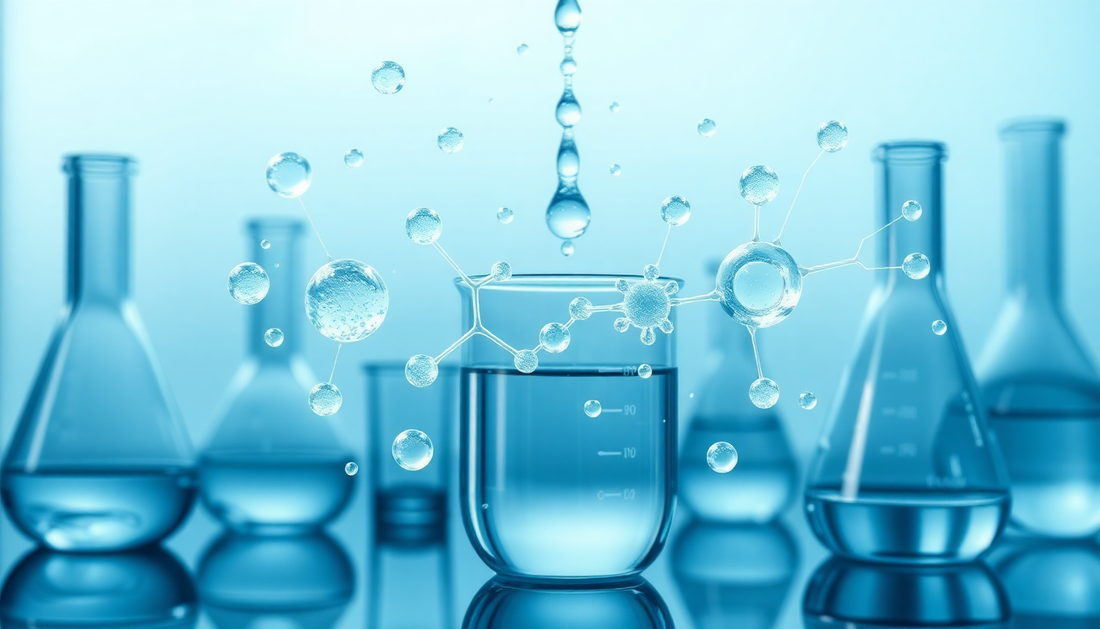How Water Cleanses the World – Chemistry in the Service of Ecology and Health
Water is the lifeblood of our planet. It is not only essential for humans, animals, and plants but also plays a crucial role in cleaning and preserving our environment. In this blog post, we will explore the fascinating world of water purification and the chemical processes behind it.
The importance of clean water
Clean water is not only important for our personal well-being but also for the health of our entire ecosystem. Contaminated water can have serious consequences – from diseases to the destruction of sensitive habitats. Therefore, it is of crucial importance to effectively clean and protect water.
Water pollution and its causes
Water can be polluted in various ways. Industrial wastewater, pesticides from agriculture, microplastics, and other pollutants enter our water bodies and heavily burden them. Climate change with its effects such as droughts and floods also contributes to the deterioration of water quality.
The consequences of water pollution
The consequences of water pollution are diverse and can reach catastrophic proportions. Contaminated water can transmit diseases such as cholera, typhoid, or hepatitis, thereby endangering the health of humans and animals. Furthermore, pollutants can accumulate in the food chain and thus throw the entire ecology of a body of water out of balance.
Chemical processes of water purification
To address the challenges of water pollution, scientists and engineers rely on innovative chemical technologies. These methods aim to effectively remove pollutants and sustainably improve water quality.
Filtration and adsorption
One of the fundamental pillars of water purification is filtration. This process removes particles, suspended solids, and dissolved substances from water using membranes or porous materials. Additionally, adsorption is employed, where pollutants are bound to the surface of activated carbon or other adsorbents.
Chemical oxidation
Organic pollutants such as pesticides or pharmaceutical residues can be broken down through chemical oxidation. Here, oxidizing agents like chlorine, ozone, or hydrogen peroxide are used to destroy the molecular structures of the pollutants.
Biological treatment
In addition to purely chemical processes, biological methods also play an important role in water purification. Microorganisms such as bacteria or algae can break down organic substances and thus contribute to improving water quality.
Ion exchange and membrane filtration
Ion exchange resins are used for the removal of dissolved ions, such as heavy metals. Additionally, membrane filtration enables the separation of even the smallest particles and molecules from water.
Innovative approaches in water purification
Research in the field of water purification is constantly progressing. New, more efficient, and environmentally friendly technologies are continuously being developed to meet the challenges of the future.
Nanotechnology in water purification
The use of nanomaterials opens up entirely new possibilities in water purification. Nanoparticles with an enormous surface area can efficiently bind and remove pollutants. Furthermore, nanofilters enable highly selective filtration.
Photocatalysis and advanced oxidation processes
Innovative oxidation processes such as photocatalysis use light energy to break down pollutants. Semiconductor catalysts are employed here, which generate reactive oxygen species under light exposure that decompose organic contaminants.
Next-generation membrane technologies
The advancement of membrane technologies plays a central role in modern water purification. New membrane materials and structures enable more efficient filtration while simultaneously reducing energy consumption.
Water as the key to a sustainable future
Clean water is not only essential for our health and the well-being of our planet, but also a crucial factor for sustainable development. Through the use of innovative chemical technologies, we can overcome the challenges of water pollution and contribute to a livable future.
Let's work together to harness the power of water to protect our environment and preserve it for future generations.































































































































